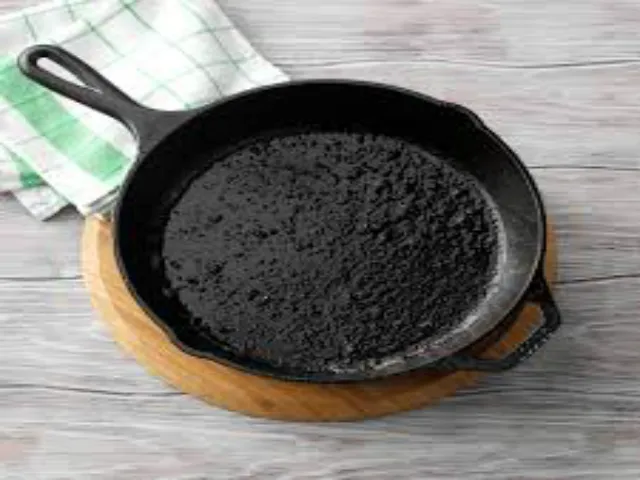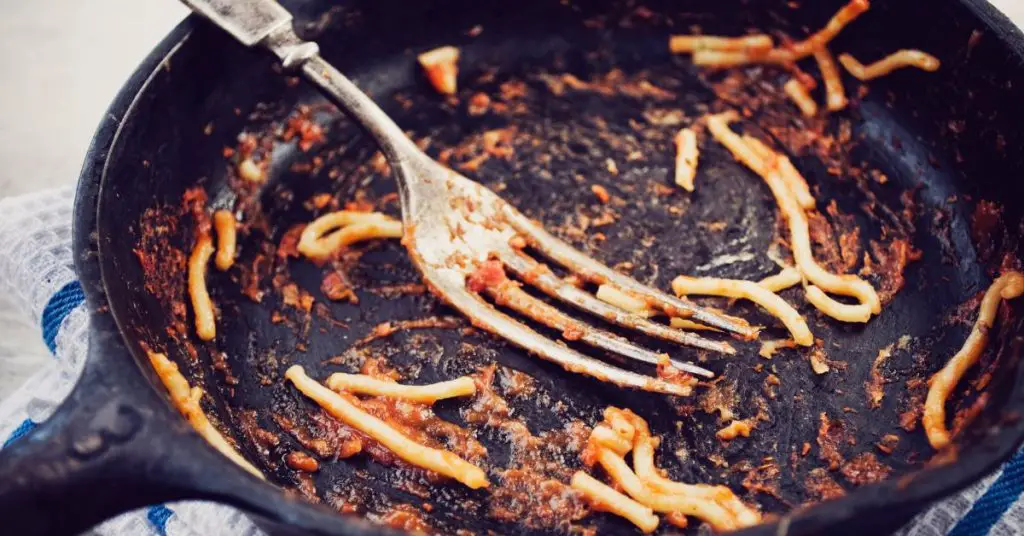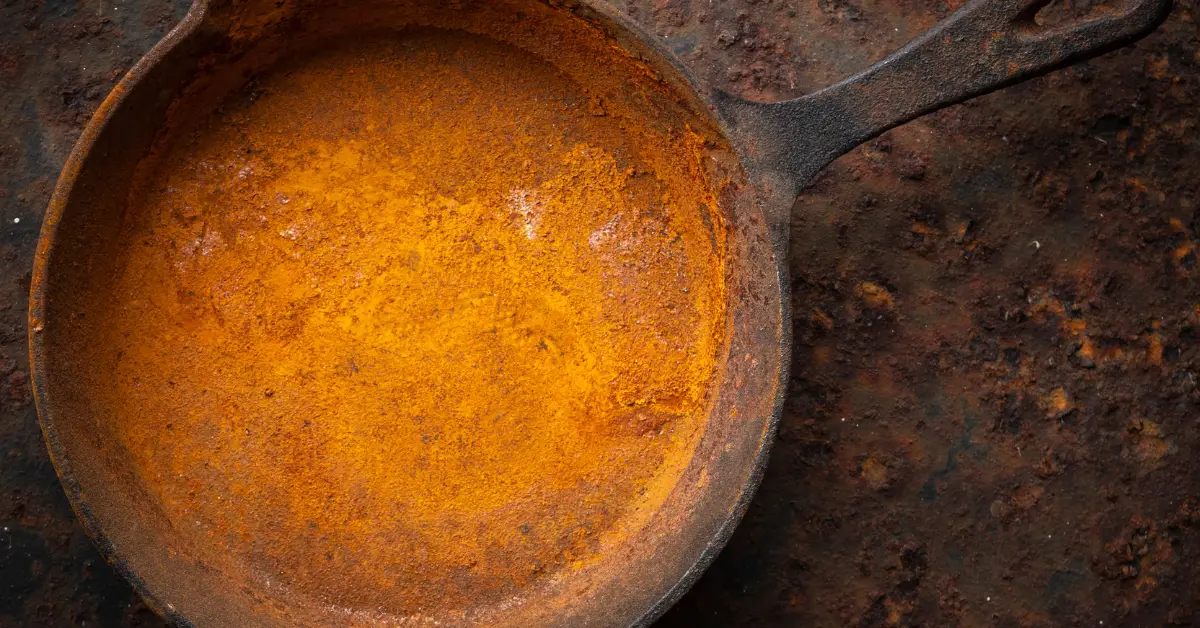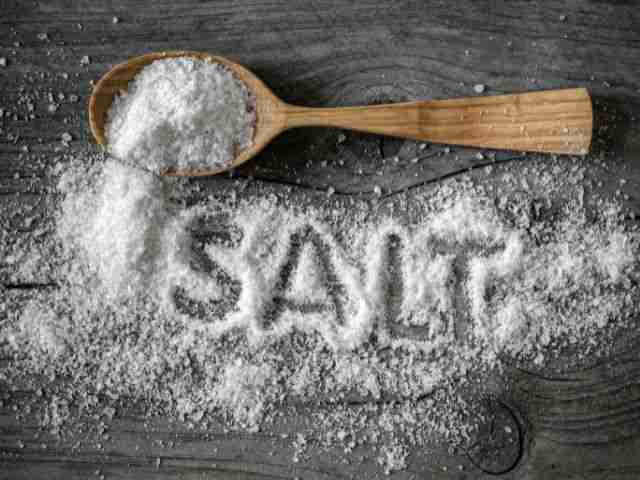So Your Cast Iron Is Sticky, But It Is EasyTo Fix It
Sticky cast iron happens when it has not been properly seasoned or there was TOO much oil applied when initially seasoning the new cast iron. Usually, this is the case.
When you first get your cast iron, clean it with hot water and soap. Yes, soap! Dry it off, then apply a thin coat of vegetable oil, Crisco, or Avocado oil. Place it upside down in a preheated 350 to 450-degree oven and bake it for an hour.
Then, turn off the oven and let the cast iron cool down inside. Repeat this process two or three times, and your cast iron will be nice and smooth! Some say it’s a science.
Below is a demonstration of a sticky cast iron fix on my grandmaw’s cornstick pan.
Table of Contents
Should A Seasoned Cast Iron Pan Be Sticky?
No, a seasoned
In addition, if you don’t season your
The Lowdown On Cast Iron Stickiness
Why Is My
If you own or have used
This stickiness is caused by the accumulation of too much oil, grease, and other food particles from cooking that build up on the pan over time.
When the seasoning gets sticky, it’s not good. Paper towels can stick to them, and your hands can get a sticky residue on them, which is frustrating.
If the sticky cast iron is not dealt with properly and quickly, the oil can become rancid, and rancid oil stinks. We don’t want sticky cast iron, and we sure don’t want a stinky
I know it can be frustrating when your cast iron gets sticky. All we can think of is why this happened and how we can prevent it from happening again.
The good thing is your cast iron skillets are not ruined, so please don’t throw them away! You can fix sticky cast iron!
If you’ve been using your
First, let’s understand why this happens. When you cook with your cast iron, oils from your food build up on the surface over time.
If these oils aren’t removed, they can oxidize and cause the surface to become sticky.
Why Is Cast Iron Sticky After Seasoning?
Over time, the type of oil and heat used to season cast iron will cause the pan’s surface to become smooth and non-stick. Or at least it should.
If your cast iron is sticky after seasoning, it may mean there wasn’t enough good oil used during the initial seasoning process or that you used too much oil when baking it in the oven.
Most likely, it is the latter. You would think more oil equals more and better seasoning. But, this is not the case with cast iron.
Too much oil will not bake onto the cast iron effectively.
When Your Cast Iron Is Sticky After Seasoning It In The Oven
Cast iron can become sticky because of what’s known as overseasoning.
Overseasoning is putting too much oil into the pan and trying to bake it onto the cast iron.
What Happens If You Season Cast Iron With Too Much Oil?
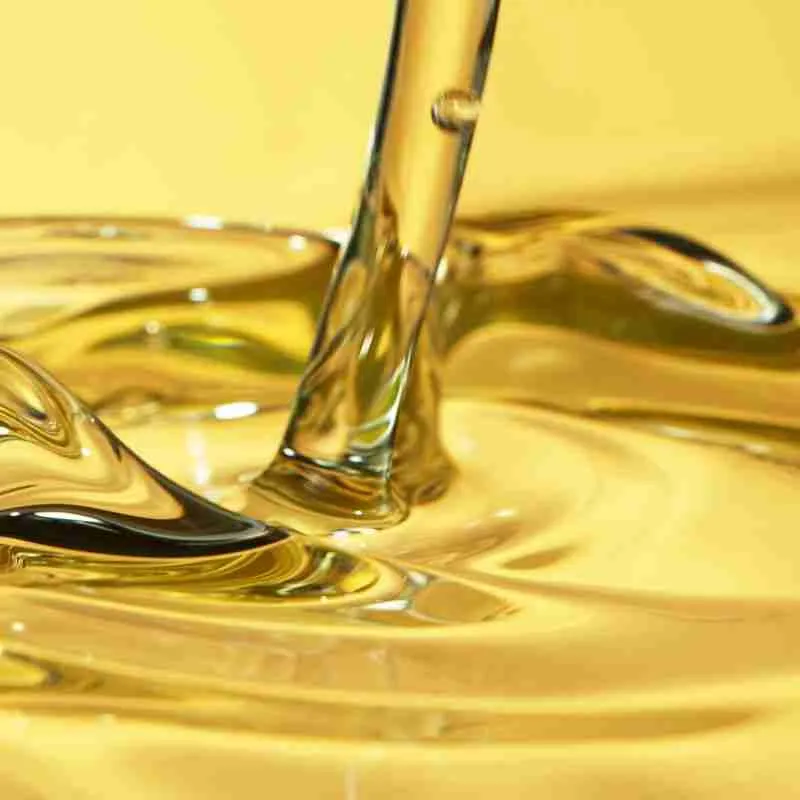
If you season cast iron with too much oil, it can affect the seasoning process and prevent good adhesion of the oil to the pan.
Too much oil can also cause a sticky residue or create an uneven “patina” on your cookware.
It’s best to use just enough oil to lightly coat the entire surface without leaving pools of oil.
Depending on the size of your pan, you may only need a few teaspoons of oil to season it properly.
Don’t worry, though. You can take a few easy steps to eliminate the stickiness and keep your skillet in good condition.
It’s important to remember that properly seasoned cast iron pans are naturally non-stick and should not be sticky at all.
How Do I Make My Iron Not Sticky? How To Prevent Stickiness
Fortunately, there are ways to fix sticky cast iron.
- First, make sure that you season your pan before each use by applying a thin layer of oil onto its surface. This will help create a protective barrier between the pan and any food you are cooking so that food particles won’t get stuck to the pan.
- Second, after cooking is finished, scrub off any residue with warm water and a brush or sponge. This will help remove any excess oil build-up so that it doesn’t become stuck to the pan later on.
- Finally, if your pan does get sticky over time, try using coarse kosher salt or baking soda to scrub off any residue before washing it with soap and water.
- If these do not remove it, you may have to use a scouring pad or a fine steel wool pad like an SOS pad and scrub off any remaining.
How Do I Clean A Sticky Cast Iron Skillet ?
To clean cast iron cookware, you’ll need to start by adding a little water and heating it on the stove for a few minutes.
This will loosen any stuck-on food particles and make them easier to remove.
After that, use a stiff brush in the hot water to scrub away any leftover bits of food.
For extra scrubbing power, you can add coarse sea salt or baking soda to the skillet.
I typically don’t recommend putting cast iron in the dishwasher, but it will strip all the oily gunk and seasoning off.
We like to use a chainmail scrubber because it is gentle on the finish, yet it will easily remove any bits of stuck-on or burnt-on food particles.
Finally, add vegetable oil or lard and rub it over the entire skillet. This will help keep it from sticking in the future.
If the sticking is really stubborn, sometimes it’s a good idea to season the skillet.
To do this, spread a thin layer of vegetable oil or lard over the entire surface and heat it in an oven at 350-450F for 1 hour.
Allow it to cool completely before you use it again. This will help create a non-stick surface that will make it easier to clean.
With regular use and proper care, your
If you follow these steps, you should be able to keep your skillet in perfect condition.
FAQ
Can I cook with sticky cast iron?
Yes, you can cook with a sticky cast iron pan, but it is not recommended.
What causes sticky cast iron?
A sticky pan is usually due to accumulated oils from previous cooking sessions that have built up on the surface of the cast iron or had too much applied while seasoning.
How do I make my iron not sticky?
To prevent a cast iron skillet from being sticky, excess grease must not be applied and baked into the cast iron or left in the pan for extended periods. This can cause the grease to turn rancid, too.
Should a seasoned cast iron pan be sticky?
No. A well-seasoned cast iron skillet should not be sticky. The oils help to create a well-seasoned surface that keeps your food from sticking and provides extra flavor, as well as protects it from rusting.
For more questions and answers, check out our frequently asked questions page for practical tips and tricks.
